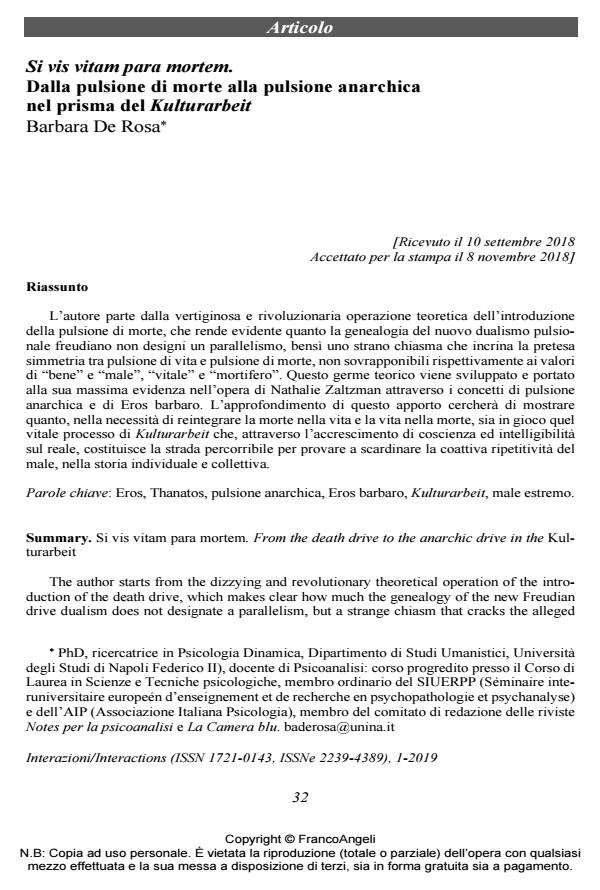Si vis vitam para mortem. From the death drive to the anarchic drive in the Kulturarbeit
Journal title INTERAZIONI
Author/s Barbara De Rosa
Publishing Year 2019 Issue 2019/1
Language Italian Pages 15 P. 32-46 File size 177 KB
DOI 10.3280/INT2019-001003
DOI is like a bar code for intellectual property: to have more infomation
click here
Below, you can see the article first page
If you want to buy this article in PDF format, you can do it, following the instructions to buy download credits

FrancoAngeli is member of Publishers International Linking Association, Inc (PILA), a not-for-profit association which run the CrossRef service enabling links to and from online scholarly content.
The author starts from the dizzying and revolutionary theoretical operation of the intro-duction of the death drive, which makes clear how much the genealogy of the new Freudian drive dualism does not designate a parallelism, but a strange chiasm that cracks the alleged symmetry between the life drive and the death drive, not overlapping respectively to the values of "good" and "evil", "vital" and "deadly". This theoretical germ is developed and brought to its maximum evidence in the work of Nathalie Zaltzman through the concepts of anarchic drive and of barbaric Eros. The deepening of this contribution will try to show how, in the necessity of reintegrating death in life and life into death, the vital process of Kulturarbeit is at stake which, through the increase of conscience and intelligibility on reality, constitutes the path that can be followed by trying to undermine the coactive repetitiveness of evil, in individual and collective history.
Keywords: Eros, Thanatos, anarchic drive, barbaric Eros, Kulturarbeit, extreme evil.
- L'inconscio musicale nel soggetto e nella famiglia Ludovica Grassi, in INTERAZIONI 2/2019 pp.65
DOI: 10.3280/INT2019-002005
Barbara De Rosa, Si vis vitam para mortem. Dalla pulsione di morte alla pulsione anarchica nel prisma del Kulturarbeit in "INTERAZIONI" 1/2019, pp 32-46, DOI: 10.3280/INT2019-001003